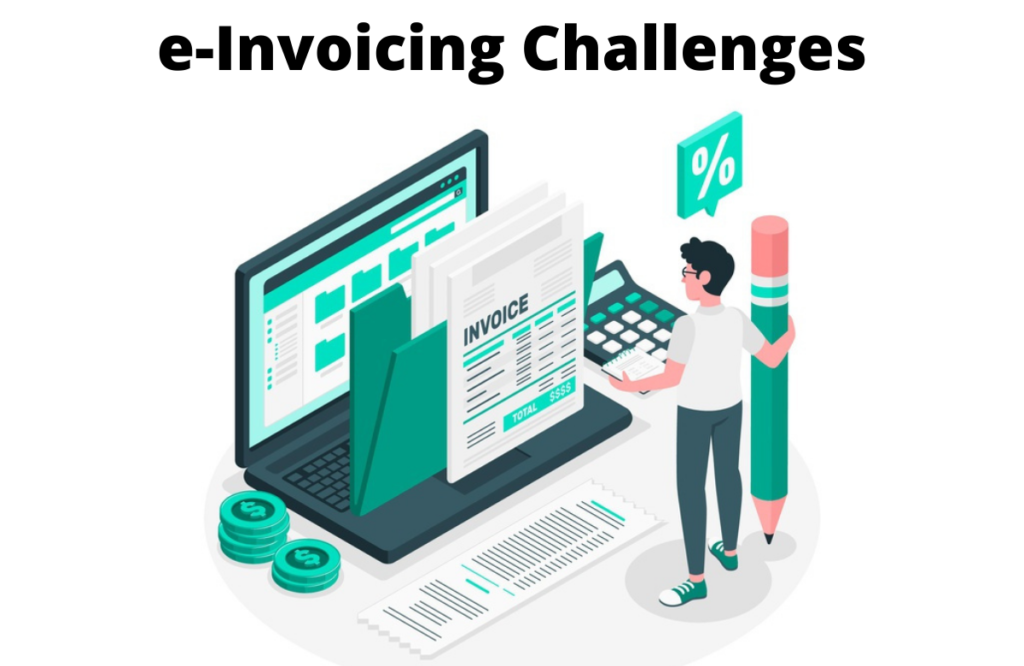9 Critical Challenges Related to the New E-Invoicing System
As we already know that the new e-Invoicing mandate will come into effect from April 1, 2022, for all those taxpayers whose aggregate turnover exceeds the INR 20 Crores mark. So keeping this in mind we have listed out 9 critical challenges that you may face under the new e-invoicing system.

- ERP System Integration
Every taxpayer falling in the prescribed category needs to generate e-invoices and for that, they need to integrate ERP systems with that of IRP or GSP, or ASP. As ERPs’ are customizable, so the standard format of the invoice can be changed as per the recently launched schema. This will ensure an unrestricted flow of invoice data to IRP and e-invoices back to the ERP system. Moreover, companies that are using homegrown ERPs’ are facing API integration challenges. - Bifurcating B2B and B2C Invoices
As e-invoicing system is only applicable to B2B invoices and not to B2C invoices. So, in case if you want to generate an e-way bill for a B2B invoice you need to filter out B2B invoices from a pool of invoices. This process of bifurcation of invoices will take a considerable amount of time and effort. - Non-applicability of e-invoicing to B2C transactions
B2C transactions are more in number when compared to B2B transactions. Moreover, most case of fraud occurs in B2C invoices as no Input Tax Credit is involved. Hence, such a system should come into power that permits a customer to report fake invoices and accordingly help to control tax evasion. - Cancellation and amendment of e-invoice
The new e-invoicing system does not allow you to partially cancel the invoice, you need to cancel the entire e-invoice. It shall be noted that you can cancel the e-invoice within 24 hours on the IRP. You can edit or amend the invoice details including the invoice number on the GST portal before or after filing with proper explanation and clarifications for audit-related requirements. - An alternate solution for archiving data
As we already discussed the invoice data on the IRP remains only for 24 hours due to this you need to find an alternate solution for archiving data. - System stability issues
As we already know GST is inching towards stability by introducing the e-Invoicing system in India. Even though the e-invoicing system was introduced in October 2020, you might face some system stability issues. Besides, users are also experiencing errors in Masters such as invalid GSTIN, HSN/SAC code. - Reconciliation of e-invoice level data
There can be instances where you need to update GSTR-1 after uploading the invoice into the IRP. It shall be noted that both the invoice level data will remain in the GST server. Thus, reconciliation of both invoice level data needs to be carried out by the taxpayer, with the help of some tool or utility. - Different workflow to process other documents
As we already know the provision of e-invoicing applies only to B2B invoices and export supplies. Thus, you need a different workflow to process delivery challans, bills of supply, job work, and other similar transactions. But to create an altogether different workflow will take a lot of time and effort. - Other critical challenges
Apart from the aforementioned challenges, there are certainly other concerns such as:
Determining whether we need to obtain an e-Invoice from the purchaser or not?
The Bottom Line
E-invoicing is a new concept under GST, implemented in India after multiple meetings, conferences, discussions, and feedback sessions. The real challenges related to the new e-invoicing system will unfold only when the taxpayer starts using it on a real-time basis. However, by choosing GSTrobo e-invoicing software, we assure you that your transition to an e-invoicing system will be seamless and hassle-free. As we have designed and developed this e-invoicing software keeping the taxpayers’ pain points in mind.
